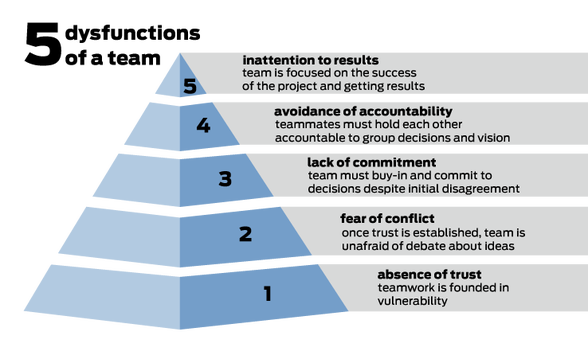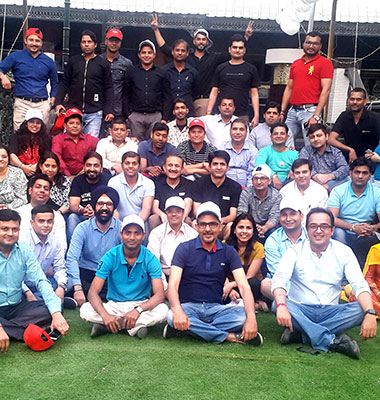Dysfunctions of a Team
OverviewThe model of five behaviours of a cohesive team was conceptualized by Patrick Lencioni. Not strategy or technology but it is teamwork that remains the ultimate competitive advantage. Genuine team work in most organisations remains elusive and fails to achieve teamwork. Creation of new or project teams is the simplest job whereas managing the stages of development of teams has become a tedious task. During these stages, teams face numerous challenges which are termed as Dysfunctions of a team.
The five Dysfunctions of a Team

Absence of Trust - The first dysfunction is an absence of trust among
team members. Team
members who are not open with one another about their mistakes and weaknesses make it
impossible to build a foundation of trust.
Fear of Conflict -Failure to build trust leads to the second
dysfunction i.e. Fear of conflict. Teams
that lack trust are incapable of engaging in unfiltered and passionate debate of
ideas.
Lack of Commitment - – Lack of healthy conflict is a problem
because it ensures the third dysfunction
of a team Lack of commitment. Without having healthy and open debates, team members
rarely, if
ever, buy - in and commit to decisions.
Avoidance of Accountability - Due to lack of real commitment and
buy –in, team members develop
an avoidance of accountability, the fourth dysfunction. Without committing to a clear
plan, even the
most focused and driven often hesitate to call their peers on actions and behaviours
that seem
counterproductive.
Inattention to Results - Failure to hold one another accountable
creates an environment where the
fifth dysfunction can thrive. Inattention to results occurs when team members put
their individual
needs above the collective goals of the teams.


